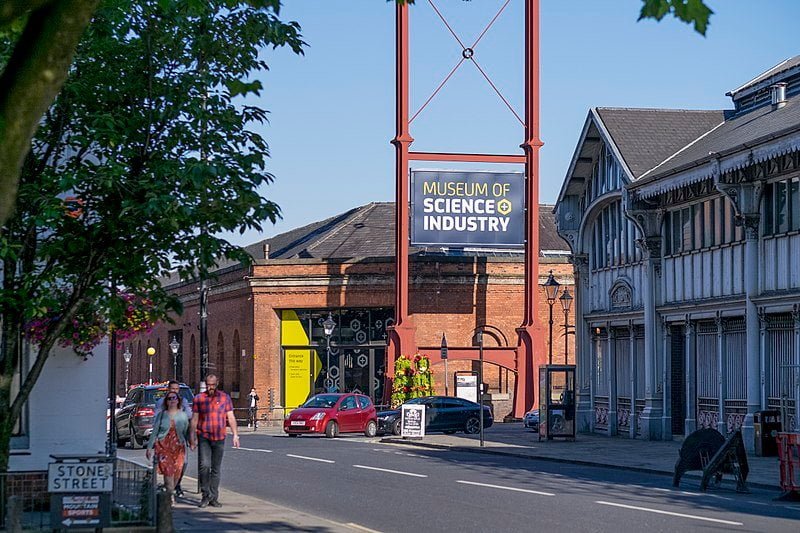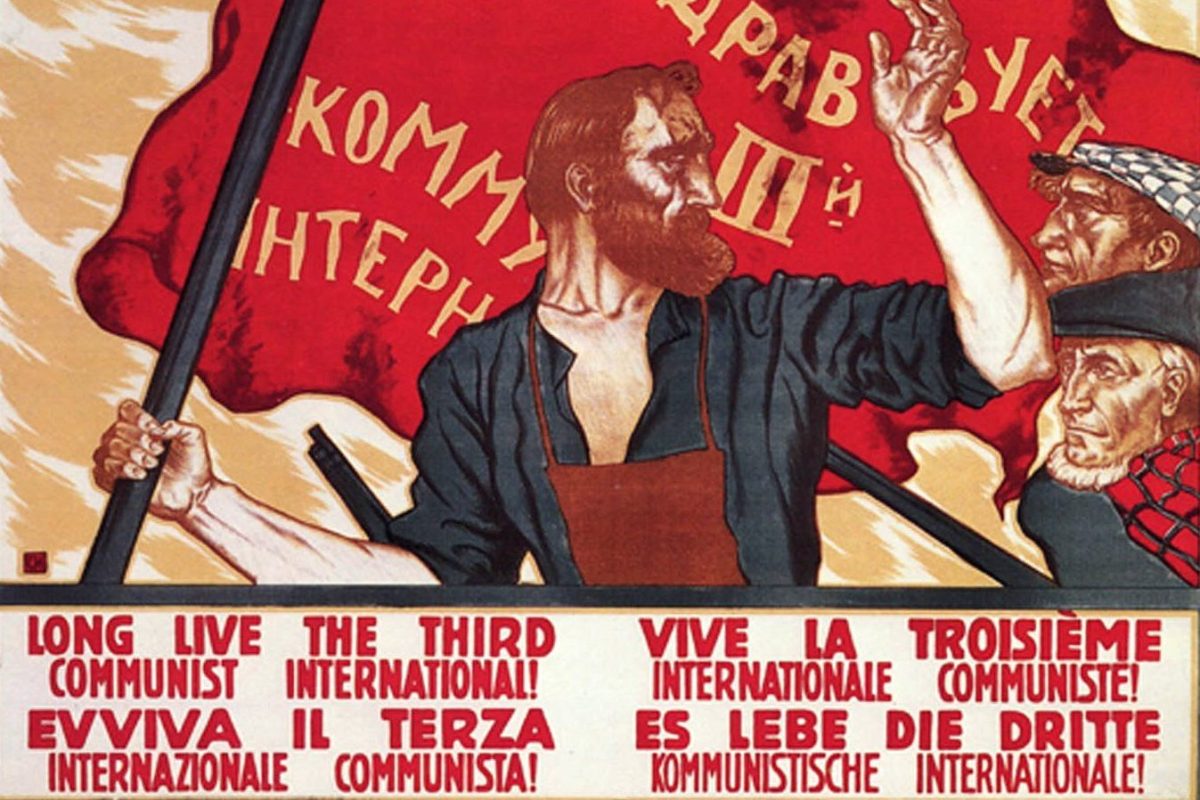In the first part of this article we attempted to identify the interacting economic, social and political processes which led to the crucial confrontation between classes known as the English Civil War. In Part 2 we will examine these processes in greater detail.
Marxists do not deny the role of accidents in history but they point out that their influence on great historical events is, in the last analysis, just what the word says – accidental. Far more significant in explaining historical change are the complex processes whereby the forces of production are developed. Each stage of development has a corresponding form of social organization or class society. Marx explains that there are four main types of class society. These he designates the “ancient, Asiatic, feudal and modern bourgeois modes of production.”
Marx goes on to say: “…social relations are closely bound up with productive forces. In acquiring new productive forces men change their mode of production, in changing the way of earning their living, they change all their social relations. The hand-mill gives you society with the feudal lord: the steam mill society with the industrial capitalist.” (Poverty of Philosophy)
Nothing in society is static. There is inevitable and constant conflict between those with conflicting economic and class interests, in short, the have’s, the have-some-but-want-mores and the have-nots. The outcome of these struggles depends on the balance of forces at any particular time. Let us quote Marx again. “At a certain stage of their development, the material productive forces of society come into conflict with the existing relations of production, or- what is but a legal expression for the same thing- with the property relations within which they have been at work hitherto. From forms of development of the productive forces these relations turn into their fetters. Then begins an epoch of social revolution.” (Introduction to ‘Contribution to a Critique of Political Economy’)
The English Civil War was part of such a revolution. It was not a clash of personalities between King Charles, he of the flowing locks, frills and furbelows and Cromwell, austere and even dour though he may have been. It was not simply a clash between old and new forms of religious worship although there was always a suspicion that James perhaps, but Charles more definitely, wished to rehabilitate Catholicism. Nor was it simply a clash between a monarch who wanted absolute power and a Parliament defiantly determined to defend and develop its political influence. Material interests were involved. This was class struggle.
Feudal society in England was dealt a mortal blow at the Battle of Bosworth in 1485 where the ironically-named ‘nobles’ – in reality gangster barons, fought themselves virtually to a standstill. The new King, Henry VII, was on the throne as the result of force and violence and was determined to secure his own position by ensuring that the barons did not regain their previous power. They had by no means totally lost their influence but, along with various other institutions, they were rooted in the country’s feudal past. They had to be swept away or at least brought to heel if modernization was to take place.
By the 1630s the population of England and Wales was about 5 million of whom the majority were still engaged in agriculture. Many were yeoman farmers cultivating their own or rented smallholdings. They were strongly independent-minded and prepared to defend their interests. A peasantry declining in numbers worked for frugal rewards on small rented plots. There were a larger number of landless labourers who eked out a similarly frugal existence by working for wages on the land supplemented by earnings from work in their own homes, spinning or weaving in the cloth trade, for example. Most industrial production at this time bore little resemblance to modern industry, being carried out in a rural setting by cottagers as a family unit in their own homes. Significantly, however, production was for the market rather than for the producer’s own consumption. The increasing development of large-scale enterprises in such industries as mining, iron and metal-working, seafaring, transport and distribution was creating a new class in society, those who sold their labour power in return for wages: as such they were the forerunners of the modern working class or proletariat. The common people, both rural and in growing numbers urban, had no political rights whatever.
England had a significant woollen industry, centred especially in East Anglia, the Cotswolds and the West Riding of Yorkshire. The thriving nature of this industry had caused many landowners to convert their land from use for labour-intensive arable farming to sheep pasture. This meant that large numbers of peasants and their families lost their livelihoods and substantial numbers of them drifted to the towns, especially London, where they took whatever low-paid work was available, themselves also becoming part of the proletariat. Others became robbers, beggars and vagabonds. Tudor England saw an explosion of crime.
The inhabitants of the many towns that were growing rapidly could not cultivate their own crops or rear many animals and so to cater for urban demand, some landowners seized the opportunity to overhaul their agricultural practices along capitalist lines, producing for the urban market. This process involved enclosures which consolidated land in far fewer hands, allowed modernization to take place and led to an increase in productivity. It also forced many others who had worked on the land to migrate in search of work. Some of the larger landowners became capitalists producing for the market, not for subsistence, and these processes were carried out with the ruthlessness and disregard for social effects that typify capitalist business methods. These landowners or gentry and the emerging bourgeoisie, both growing in wealth and playing such an important part in the developing economy, found their interests at odds with those surviving vestiges of the past, the feudal nobility, the Church and the Crown. We have seen that the Tudor monarchs were adept at playing off the progressive bourgeoisie and gentry against the Church and the so-called nobility. James I and Charles I however claimed the God-given right to rule as absolute monarchs. Had they succeeded, they would have returned England to feudal conditions.
What was at stake was nothing less than a revolution. The middle class, the bourgeoisie, urgently needed political power so that it could proceed to develop capitalism fully, unfettered by obsolete political and governmental practices. Standing in the way was Charles I, a singularly inept and obstinate man with delusions of grandeur and ideas and attitudes which were a throwback to past centuries. In his support were gathered all the forces that likewise stood in the way of progress. Together they stood, like Horatius on the bridge over the River Tiber but with much less success, trying to defend ideas, institutions and practices which were obstructing the development of the so-called ‘free market economy’.
It was all about money and the power that goes with money. The Crown’s methods of raising revenue were still largely feudal in nature. The King, a parasite himself, was surrounded by favourites who also enjoyed a parasitic existence. Many of them had sinecures. These were fancy titles and loads of money for doing little or nothing. They had to be paid for out of taxes. James and Charles were permanently at odds with Parliament over the issue of taxation and this symbolized their different material interests. The King raised money for himself by granting monopolies – exclusive rights for favoured individuals or companies to trade in or manufacture specified commodities. These had the effect of increasing prices. The King alone had the power to declare war. Wars were very expensive. The bourgeoisie had no objection to wars if they defeated foreign commercial rivals or secured trading bases abroad. They had, for example, supported the Tudors in wars against Spain and the Dutch but they did not see why the King alone should be allowed to decide such matters.
The scene was set for the bourgeoisie and gentry to try to match their economic power with corresponding political power. The outcome was civil war and a political revolution. As a result of the decisive defeat of the forces around the King, sovereignty came into the hands of a coalition of progressive forces who then established the political, legal, ideological and other institutions which were the framework within which capitalism could grow and flourish. The divine right of kings was challenged by the divine right of capitalist property. The latter won.
It cannot be stressed too strongly that the Civil War was a class struggle and it led to a political revolution of an immensely progressive character. It was the culminating part of a social revolution that transformed England from a feudal to a capitalist nation. We do not seek to idealize the bourgeoisie of the time. They had all the faults common to their class whether in the seventeenth century or today in the twenty-first. However in fighting to assert their right to economic liberties and freedoms, they were also fighting, albeit less consciously, for the rights and liberties of artisans and craft workers, small businessmen and wage-earners in industry and on the land. The bourgeois in Parliament drew its support from the economically more advanced parts of England, generally the south and the east. They enjoyed much support among the artisans, apprentices and proletariat of London, far and away the largest and most influential city in England. Despite the enormity of defiance to the monarch who regarded himself as God’s anointed, the bourgeoisie did not flinch when the King declared war on them.
It is important to emphasise that the early part of the seventeenth century was a time of inflation which particularly affected food prices and this, as always, made life particularly difficult for the poor. Real wages fell. Additionally, England could not avoid the effects of the Thirty Years’ War which devastated Europe from 1618 disrupted trade and depressed the export market. The run-up to the Civil War was a period of social and political instability. As a Royalist wrote in 1642: “The countenances of men are so altered, especially of the mean and middle rank of men, that the turning of a straw would set a whole country in a flame, and occasion the plundering of any man’s house or goods.”
Part three of this article will examine the constant shifts in class interests and political consciousness during the period of the Civil War. A revolution is an immensely dynamic process in which huge numbers of people enter political activity for the first time. They learn extremely quickly and a bedrock of experience is laid down on which future generations can draw.





